The compact SUV segment is booming, and two contenders that often attract attention are the Suzuki Vitara and the VW T-Cross. Both vehicles offer sharp aesthetics, practicality, and advanced features to suit urban lifestyles and weekend adventures alike. In this comparative analysis, we will delve into the technical specifications and innovations that set these models apart.
Suzuki Vitara vs VW T-Cross – Differences & prices compared
Powertrains and Performance
The Suzuki Vitara comes equipped with a choice of petrol engines, featuring both Mild Hybrid Electric Vehicle (MHEV) and Full Hybrid variants. The MHEV offers a power output of 129 HP with a commendable torque of 235 Nm. This engine, when paired with Suzuki's intelligent All-Wheel Drive, allows for a versatile driving experience. The Vitara can accelerate from 0 to 100 km/h in a respectable time of 9.5 seconds, making it a solid choice for those who enjoy spirited driving.
On the other hand, the VW T-Cross stands out with several engine options, delivering up to 150 HP from its more powerful variants. The T-Cross has a competitive 0-100 km/h time as well, with the fastest version achieving the mark in just 8.4 seconds. While the T-Cross is restricted to Front-Wheel Drive, its range of engine outputs — combined with a maximum torque rating of 250 Nm — provides sufficient grunt for city and highway cruising.
Fuel Efficiency and Emissions
Fuel efficiency is an essential factor for many SUV buyers, and here the Suzuki Vitara claims the edge with a consumption rating as low as 5.0 L/100 km thanks to its hybrid technology. Its CO2 emissions range from 113 to 129 g/km, placing it in a competitive efficiency class of C and D.
In comparison, the VW T-Cross features slightly higher fuel consumption figures, starting at 5.6 L/100 km and reaching up to 6.0 L/100 km. The T-Cross's CO2 emissions also hover between 127 g/km and 135 g/km. Although the T-Cross is slightly less efficient, it remains a viable option for buyers focused on performance and driving pleasure.
Interior and Cargo Space
When it comes to interior space, the T-Cross takes the lead. With a trunk capacity of 455 liters, it outshines the Vitara, which offers 375 liters of cargo space. Both vehicles are designed to comfortably seat five passengers, but the T-Cross provides a bit more room for luggage, which is beneficial for family outings or road trips.
Both SUVs come equipped with the latest technology, including advanced infotainment systems and driver-assistance features that enhance safety. The Vitara provides a user-friendly interface, while the T-Cross boasts VW's renowned digital cockpit, allowing drivers to customize their driving experience easily.
Dimensions and Design
In terms of exterior dimensions, the Suzuki Vitara measures 4185 mm in length, 1775 mm in width, and 1595 mm in height. The compact VW T-Cross is slightly smaller, at 4127 mm long, 1784 mm wide, and 1573 mm tall. Despite the T-Cross's diminutive stature, its bold design language and contemporary looks offer an attractive appeal that is hard to overlook.
The Vitara's rugged design hints at its off-road capabilities, while the T-Cross leans towards a sportier and more urban-driven aesthetic. Both SUVs feature five doors for easy access, but the overall aesthetic will likely influence buyers based on personal preferences.
Final Thoughts
In conclusion, the choice between the Suzuki Vitara and the VW T-Cross largely depends on what you value in a compact SUV. If you prioritize fuel efficiency, hybrid technology, and off-road versatility, the Vitara might suit your needs better. Conversely, if a powerful engine, superior cargo space, and modern technology are more crucial for your lifestyle, the VW T-Cross takes the lead.
Both vehicles showcase the best of what the compact SUV segment has to offer, making either a worthy option for buyers looking to balance practicality with performance. Ultimately, a test drive may be the best way to decide which model truly fits your lifestyle.
Here’s where it gets real: The technical differences in detail
Costs and Efficiency:
Price and efficiency are often the first things buyers look at. Here it becomes clear which model has the long-term edge – whether at the pump, the plug, or in purchase price.
VW T-Cross has a slightly advantage in terms of price – it starts at 21100 £, while the Suzuki Vitara costs 23600 £. That’s a price difference of around 2494 £.
Fuel consumption also shows a difference: Suzuki Vitara manages with 5 L and is therefore barely noticeable more efficient than the VW T-Cross with 5.40 L. The difference is about 0.40 L per 100 km.
Engine and Performance:
Power, torque and acceleration say a lot about how a car feels on the road. This is where you see which model delivers more driving dynamics.
When it comes to engine power, the VW T-Cross has a slightly edge – offering 150 HP compared to 129 HP. That’s roughly 21 HP more horsepower.
In acceleration from 0 to 100 km/h, the VW T-Cross is to a small extent quicker – completing the sprint in 8.40 s, while the Suzuki Vitara takes 9.50 s. That’s about 1.10 s faster.
In terms of top speed, the VW T-Cross performs barely noticeable better – reaching 200 km/h, while the Suzuki Vitara tops out at 190 km/h. The difference is around 10 km/h.
There’s also a difference in torque: VW T-Cross pulls hardly perceptible stronger with 250 Nm compared to 235 Nm. That’s about 15 Nm difference.
Space and Everyday Use:
Beyond pure performance, interior space and usability matter most in daily life. This is where you see which car is more practical and versatile.
Both vehicles offer seating for 5 people.
In curb weight, Suzuki Vitara is hardly perceptible lighter – 1255 kg compared to 1267 kg. The difference is around 12 kg.
In terms of boot space, the VW T-Cross offers somewhat more room – 455 L compared to 375 L. That’s a difference of about 80 L.
In maximum load capacity, the VW T-Cross performs to a small extent better – up to 1281 L, which is about 161 L more than the Suzuki Vitara.
When it comes to payload, VW T-Cross slightly takes the win – 480 kg compared to 400 kg. That’s a difference of about 80 kg.
Who wins the race?
The VW T-Cross proves to be outperforms in nearly all aspects and therefore becomes our DriveDuel Champion!
VW T-Cross is the better all-rounder in this comparison.
Costs and Consumption
View detailed analysis
Engine and Performance
View detailed analysis
Dimensions and Body
View detailed analysis
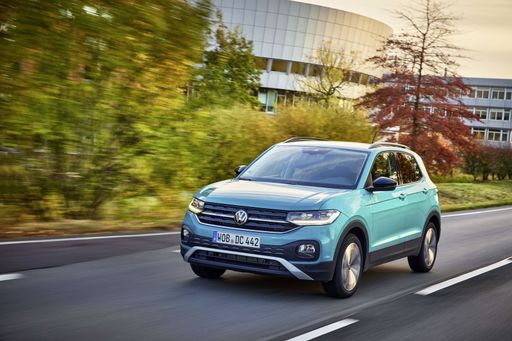 @ Volkswagen AG / VW Media
@ Volkswagen AG / VW Media
VW T-Cross
Suzuki Vitara
The Vitara is a city-smart SUV with a cheeky streak of off-road promise, perfect for drivers who want practicality without pretense. It’s honest, easy to live with and surprisingly likeable, a sensible companion for everyday adventures and weekend escapes.
details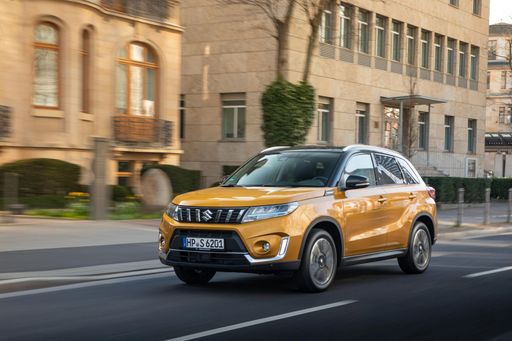 @ Suzuki Motor Corporation
@ Suzuki Motor Corporation
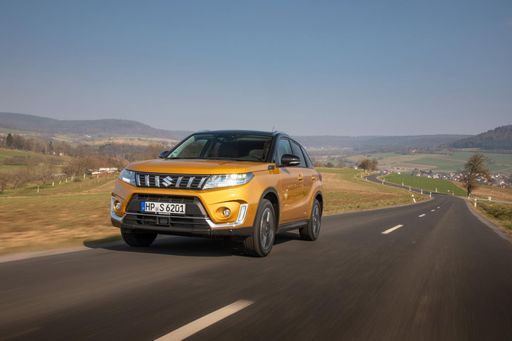 @ Suzuki Motor Corporation
@ Suzuki Motor Corporation
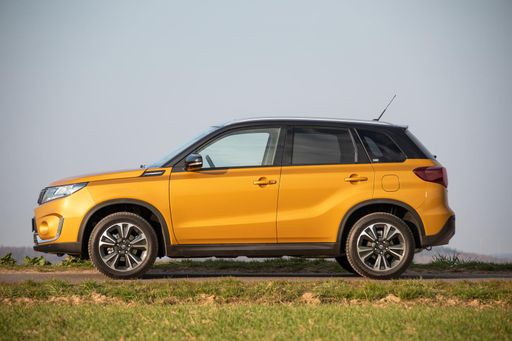 @ Suzuki Motor Corporation
@ Suzuki Motor Corporation
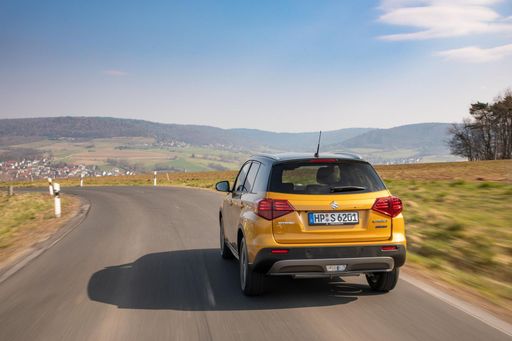 @ Suzuki Motor Corporation
@ Suzuki Motor Corporation
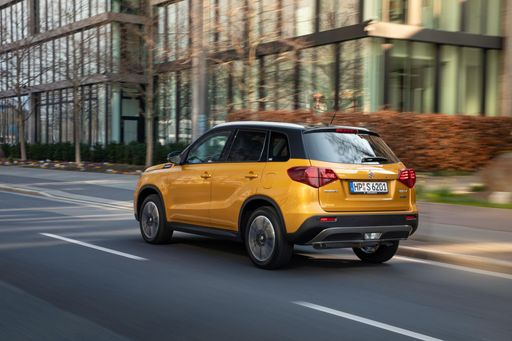 @ Suzuki Motor Corporation
@ Suzuki Motor Corporation
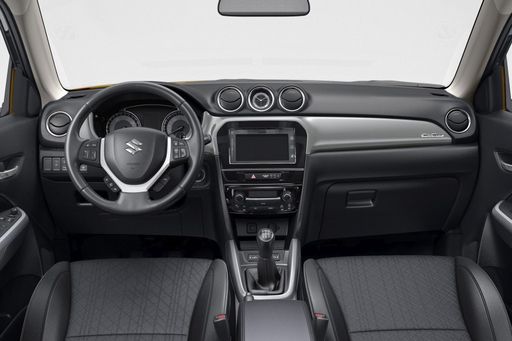 @ Suzuki Motor Corporation
@ Suzuki Motor Corporation
VW T-Cross
The VW T-Cross turns everyday practicality into a style statement, offering a roomy-feeling cabin, clever storage and playful design that suits town life and family duties alike. On the road it's composed and relaxed, rewarding buyers who want the raised seating and confident presence of an SUV without the weighty compromises.
details @ Volkswagen AG / VW Media
@ Volkswagen AG / VW Media
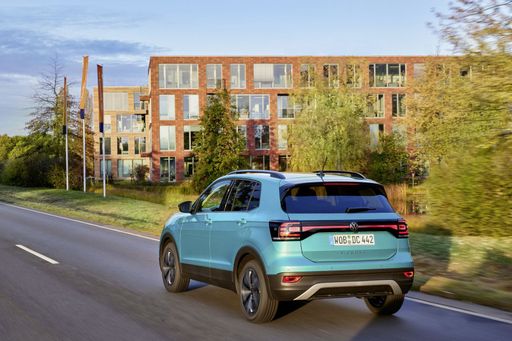 @ Volkswagen AG / VW Media
@ Volkswagen AG / VW Media
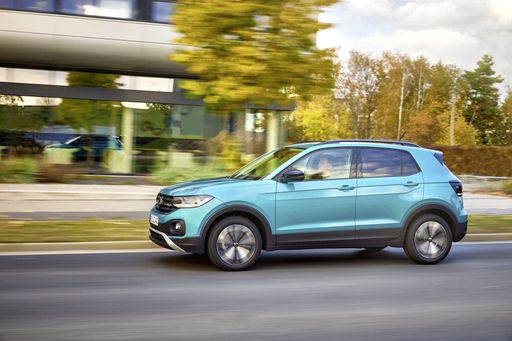 @ Volkswagen AG / VW Media
@ Volkswagen AG / VW Media
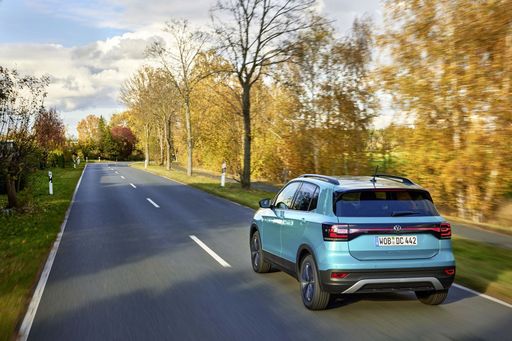 @ Volkswagen AG / VW Media
@ Volkswagen AG / VW Media
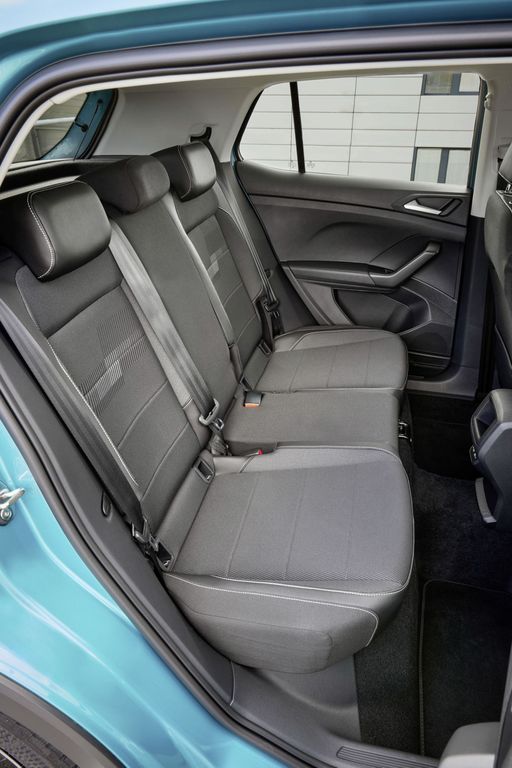 @ Volkswagen AG / VW Media
@ Volkswagen AG / VW Media
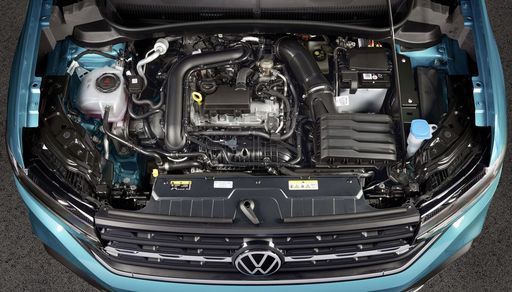 @ Volkswagen AG / VW Media
@ Volkswagen AG / VW Media
 @ Suzuki Motor Corporation
@ Suzuki Motor Corporation
|
 @ Volkswagen AG / VW Media
@ Volkswagen AG / VW Media
|
|
|
|
Costs and Consumption |
|
|---|---|
|
Price
23600 - 30900 £
|
Price
21100 - 31500 £
|
|
Consumption L/100km
5 - 5.9 L
|
Consumption L/100km
5.4 - 6 L
|
|
Consumption kWh/100km
-
|
Consumption kWh/100km
-
|
|
Electric Range
-
|
Electric Range
-
|
|
Battery Capacity
-
|
Battery Capacity
-
|
|
co2
113 - 138 g/km
|
co2
124 - 136 g/km
|
|
Fuel tank capacity
47 L
|
Fuel tank capacity
40 L
|
Dimensions and Body |
|
|---|---|
|
Body Type
SUV
|
Body Type
SUV
|
|
Seats
5
|
Seats
5
|
|
Doors
5
|
Doors
5
|
|
Curb weight
1255 - 1395 kg
|
Curb weight
1267 - 1338 kg
|
|
Trunk capacity
289 - 375 L
|
Trunk capacity
455 L
|
|
Length
4185 mm
|
Length
4127 mm
|
|
Width
1775 mm
|
Width
1784 mm
|
|
Height
1595 mm
|
Height
1573 mm
|
|
Max trunk capacity
1046 - 1120 L
|
Max trunk capacity
1281 L
|
|
Payload
375 - 400 kg
|
Payload
463 - 480 kg
|
Engine and Performance |
|
|---|---|
|
Engine Type
Petrol MHEV, Full Hybrid
|
Engine Type
Petrol
|
|
Transmission
Manuel, Automatic
|
Transmission
Manuel, Automatic
|
|
Transmission Detail
Manual Gearbox, Automated Manual, Automatic Gearbox
|
Transmission Detail
Manual Gearbox, Dual-Clutch Automatic
|
|
Drive Type
Front-Wheel Drive, All-Wheel Drive
|
Drive Type
Front-Wheel Drive
|
|
Power HP
110 - 129 HP
|
Power HP
95 - 150 HP
|
|
Acceleration 0-100km/h
9.5 - 12.7 s
|
Acceleration 0-100km/h
8.4 - 11.3 s
|
|
Max Speed
180 - 190 km/h
|
Max Speed
180 - 200 km/h
|
|
Torque
235 Nm
|
Torque
175 - 250 Nm
|
|
Number of Cylinders
4
|
Number of Cylinders
3 - 4
|
|
Power kW
81 - 95 kW
|
Power kW
70 - 110 kW
|
|
Engine capacity
1373 - 1462 cm3
|
Engine capacity
999 - 1498 cm3
|
General |
|
|---|---|
|
Model Year
2024 - 2025
|
Model Year
2024 - 2025
|
|
CO2 Efficiency Class
D, C, E
|
CO2 Efficiency Class
D, E
|
|
Brand
Suzuki
|
Brand
VW
|
What drivetrain options does the Suzuki Vitara have?
Available configurations include Front-Wheel Drive or All-Wheel Drive.
The prices and data displayed are estimates based on German list prices and may vary by country. This information is not legally binding.
